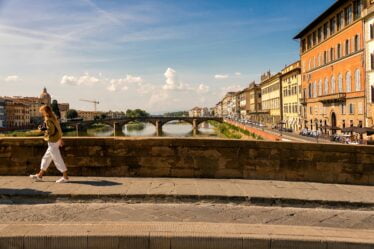
Clarice Orsini (1453–1488) was an influential figure in the Italian Renaissance, primarily known as the wife of Lorenzo de’ Medici, also known as Lorenzo the Magnificent. Her marriage brought a blend of political alliance and personal strength to one of the most significant periods in Florentine history.
Early Life
- Birth: Clarice was born on December 23, 1453, into the prominent Orsini family, a powerful noble lineage with substantial influence in Rome and the Papal States.
- Family Background: The Orsini family was among the leading aristocratic families in Italy, known for their military and political involvement. Her father, Jacopo Orsini, was the Lord of Monterotondo.
Marriage to Lorenzo
- Betrothal and Marriage: Clarice was betrothed to Lorenzo de’ Medici in 1468, largely as a political move to strengthen ties between Florence and Rome. The marriage took place on June 4, 1469, when she was 15, and Lorenzo was 20. Despite being an arranged union, it developed into a stable and mutually supportive relationship.
- Children: Clarice and Lorenzo had ten children, including notable figures such as:
- Piero di Lorenzo de’ Medici (1472–1503), known as Piero the Unfortunate.
- Giovanni di Lorenzo de’ Medici (1475–1521), who became Pope Leo X.
- Lucrezia de’ Medici (1470–1553), who married Jacopo Salviati.
- Giuliano di Lorenzo de’ Medici (1479–1516), who became Duke of Nemours.
Role and Influence
- Court Life: As the wife of Lorenzo, Clarice played a critical role in the Medici court. Though she did not engage extensively in politics, her presence and her family’s connections were vital for the Medici’s influence.
- Religious Devotion: Clarice was known for her devout Catholic faith, contrasting with Lorenzo’s more secular and humanist inclinations. Her piety had a stabilizing effect on her children and the court’s moral climate.
- Patronage: While not as culturally involved as Lorenzo, Clarice supported various charitable and religious institutions, reflecting her strong faith and commitment to social welfare.
Challenges and Legacy
- Conspiracy of the Pazzi: Clarice’s tenure as Lorenzo’s wife saw turbulent times, including the Pazzi Conspiracy of 1478, a plot to assassinate Lorenzo and his brother Giuliano. Clarice’s resilience during this crisis reinforced her role as a supportive spouse during political upheavals.
- Health and Death: Clarice’s health began to decline in the 1480s. She died on July 30, 1488, at the age of 34, a significant loss for Lorenzo and the Medici family. Her death was a profound personal blow to Lorenzo, who valued her support and companionship.
Cultural Depictions
Clarice Orsini has been portrayed in various historical and fictional works, highlighting her role as a devoted wife and mother amid the complexities of Renaissance Florence. Her life exemplifies the blend of personal strength and political acumen required in the often treacherous landscape of 15th-century Italian politics.
Conclusion
Clarice Orsini’s life as the wife of Lorenzo the Magnificent illustrates the integral role of marriage alliances in Renaissance politics. While not as publicly prominent as her husband, her influence and the connections she brought to the Medici family were crucial in maintaining and expanding their power during one of Florence’s most vibrant historical periods. Her legacy is seen in her children, who continued to play significant roles in the political and religious arenas of Italy and beyond.



